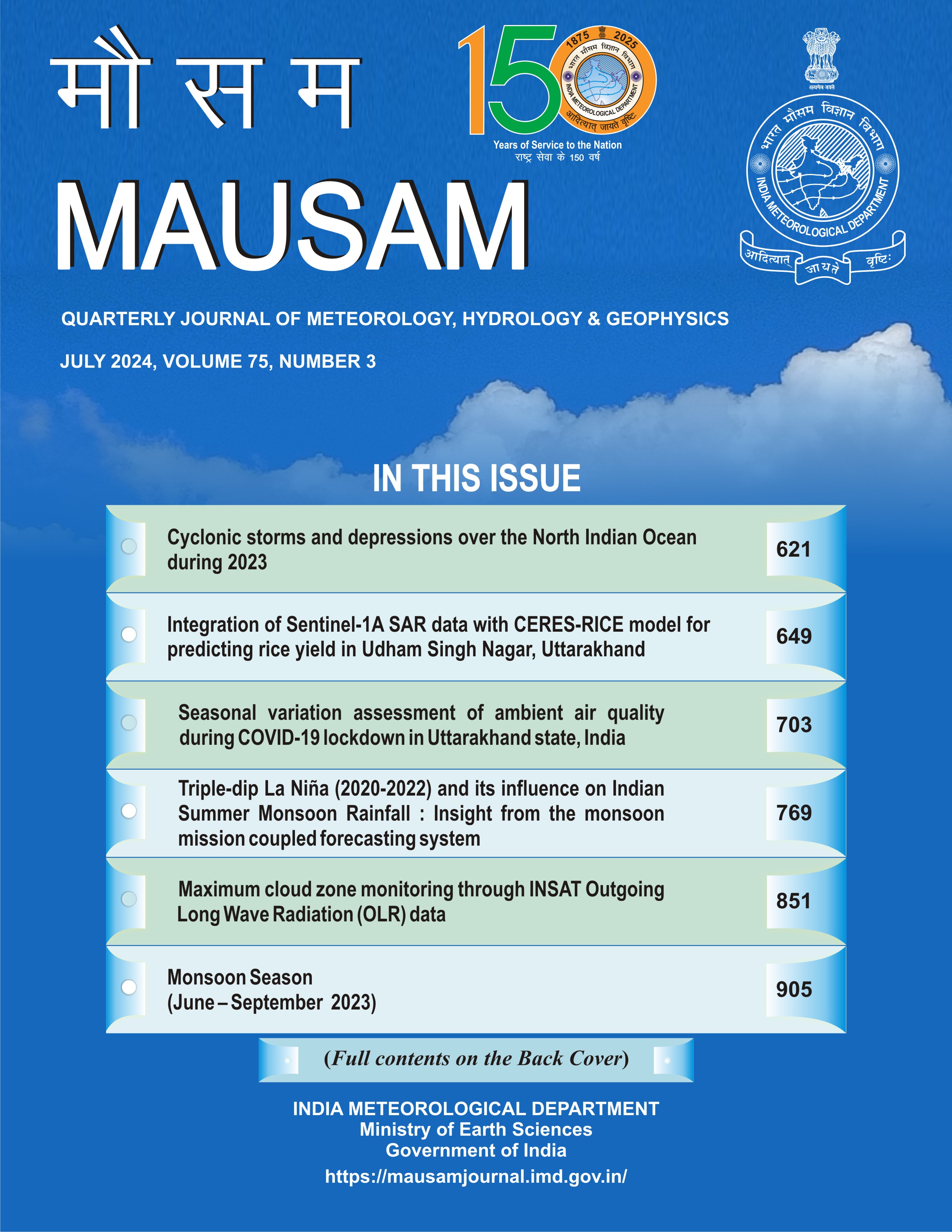Seasonal variation assessment of ambient air quality during COVID-19 lockdown in Uttarakhand state, India
DOI:
https://doi.org/10.54302/mausam.v75i3.6067Keywords:
Air pollution, Anthropogenic activities, AQI, CPCB standards, PM2.5Abstract
Presently, air pollution remains a significant environmental threat across the world. However, variation of air pollutants is largely associated with the changes in season (pre-monsoon, monsoon, post-monsoon, and winter), climatic conditions, and certain anthropogenic activities. Recently, a significant drop in the levels of air pollutants was observed due to COVID-19 lockdown in various parts of the world. Therefore, this study was performed to assess the impact of COVID-19 restrictions (pre-lockdown and post-lockdown) on the air quality of Uttarakhand state, India. Purposively, the air quality data from 8 stations collected by the Uttarakhand pollution control board was analyzed. The findings exhibited that there was a significant variation in average concentration of air pollutants including, PM10, PM2.5, SO2, and NO2. However, particulate matters were amongst the top contributors towards ambient air pollution while the gaseous pollutants such as SO2 and NO2 are below the standards given by the Central Pollution Control Board (CPCB). The present study confirmed that during the initial lockdown in 2020, the concentration of SO2, NO2, PM2.5, and PM10 decreased significantly by 9.46-86.4%, 20-74.6%, 35.6-62.6%, and 14.7-65% respectively as compared to the previous year (2019) while a significant corresponding increase by -11.6-96.5%, -9.5-70.6%, 5.1-57.6% and -17.06-71.7% was observed, respectively in comparison to the succeeding year (2021). Moreover, a considerable variation of air pollutants in different seasons and dramatic improvement in the air quality index (AQI) were observed during the lockdown period. The findings of this work suggested that the decrease in outdoor human activities can contribute significant improvement in the ambient air quality of the state of Uttarakhand, India.
Downloads
Published
How to Cite
Issue
Section
License
Copyright (c) 2024 MAUSAM

This work is licensed under a Creative Commons Attribution-NonCommercial 4.0 International License.
All articles published by MAUSAM are licensed under the Creative Commons Attribution 4.0 International License. This permits anyone.
Anyone is free:
- To Share - to copy, distribute and transmit the work
- To Remix - to adapt the work.
Under the following conditions:
- Share - copy and redistribute the material in any medium or format
- Adapt - remix, transform, and build upon the material for any purpose, even
commercially.



